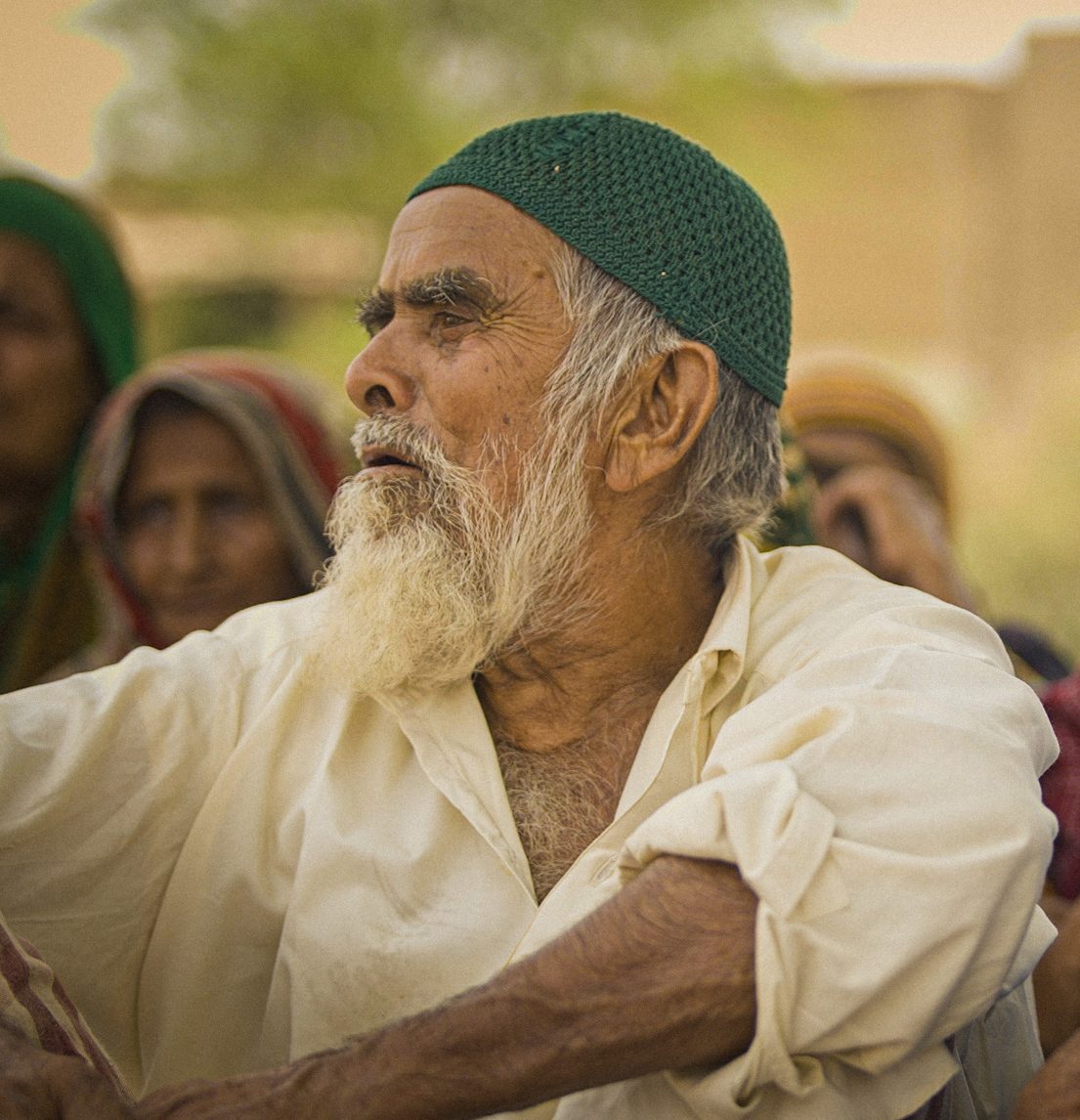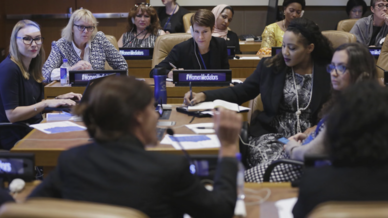Report on the Inclusion of Older Persons in Achieving the Sustainable Development Goals
Foundational Framework for Inclusive Sustainable Development
This report is based on a policy brief that builds upon a series of global commitments aimed at creating a society for all ages and ensuring no one is left behind, a core principle of the 2030 Agenda for Sustainable Development. These commitments provide a guiding framework for action:
- The Madrid International Plan of Action on Ageing (MIPAA)
- The 2030 Agenda for Sustainable Development
- The Decade of Healthy Ageing
The report emphasizes that the localisation of the Sustainable Development Goals (SDGs) must be people-centred, grounded in human rights, and recognise the contributions of older people as active partners in building inclusive communities. This approach is essential for achieving the social development targets outlined in the 2030 Agenda.
Older Persons as Key Partners in Achieving Sustainable Development Goals
Older persons are equal rights holders whose experience and knowledge are vital for strengthening communities and achieving the SDGs. However, they are frequently excluded from sustainable development policies and programmes. Enabling the full participation of older people as equal partners enhances the effectiveness of SDG realisation at national and local levels. Their direct lived experience informs practical solutions that contribute to the achievement of several key goals.
Contributions to Specific Sustainable Development Goals
- SDG 1 (No Poverty): Older persons contribute to poverty alleviation through intergenerational support and economic activity.
- SDG 3 (Good Health and Well-being): Their insights are crucial for developing age-friendly health services and promoting healthy ageing.
- SDG 5 (Gender Equality): Older women, in particular, play significant roles in community cohesion and challenging gender norms.
- SDG 8 (Decent Work and Economic Growth): They contribute through formal and informal work, mentorship, and entrepreneurship.
- SDG 13 (Climate Action): Their traditional knowledge can inform climate adaptation and mitigation strategies.
Addressing Barriers to Inclusive SDG Implementation
Despite their potential contributions, older people face significant barriers that hinder their participation in SDG-related planning and decision-making processes.
Identified Obstacles to Participation
- Age discrimination and ageism in policy-making.
- Limited access to information regarding SDG initiatives.
- A lack of inclusive platforms to voice their perspectives and needs.
Recommendations for Overcoming Barriers and Accelerating SDG Progress
To ensure the 2030 Agenda is fully realised, governments, local authorities, and development partners must take concrete actions:
- Integrate ageing and the specific needs of older people into local SDG implementation plans and budgets.
- Create inclusive consultation and decision-making spaces that actively include the voices and experiences of older people in SDG planning.
- Support and formally recognise organisations of older people as essential partners in development and SDG monitoring.
- Collect, analyse, and use sex-age and disability-disaggregated data to inform evidence-based SDG policies and planning.
Conclusion: A Society for All Ages as a Prerequisite for the 2030 Agenda
By unlocking the potential of older people as partners, governments can deliver more equitable, inclusive, and sustainable development, thereby accelerating progress towards the SDGs. This report serves as a call to action to recognise older people not as passive recipients of support, but as active contributors to achieving the 2030 Agenda. Progress for all ages is a fundamental requirement for ensuring progress for everyone.
1. Which SDGs are addressed or connected to the issues highlighted in the article?
The article explicitly and implicitly addresses several Sustainable Development Goals (SDGs) by focusing on the inclusion, rights, and contributions of older people in the context of the 2030 Agenda. The following SDGs are connected to the issues discussed:
- SDG 1: No Poverty: Explicitly mentioned as an area where older people contribute to practical solutions. The overall theme of inclusion in development policies is crucial for addressing poverty among the elderly.
- SDG 3: Good Health and Well-being: Explicitly mentioned. The article references the “Decade of Healthy Ageing,” directly linking the well-being of older persons to this goal.
- SDG 5: Gender Equality: Explicitly mentioned. The article’s call to collect “sex-age… disaggregated data” acknowledges that the experiences of ageing can differ by gender and that older women’s perspectives are vital.
- SDG 8: Decent Work and Economic Growth: Explicitly mentioned. The article highlights the “experience, knowledge, and contributions” of older people, arguing against their exclusion from development policies that foster economic growth.
- SDG 10: Reduced Inequalities: This goal is implicitly central to the article’s main argument. The text repeatedly calls for an end to exclusion and “age discrimination,” and for the “full participation of older people,” which directly aligns with the goal of reducing inequality based on age.
- SDG 13: Climate Action: Explicitly mentioned as an area where older people’s lived experience can inform solutions, emphasizing their role in climate change planning and action.
- SDG 16: Peace, Justice and Strong Institutions: This goal is strongly implied through the article’s recommendations. The call to “Create inclusive consultation and decision-making spaces” and to “Support organisations of older people as partners” is about building more inclusive and participatory institutions.
- SDG 17: Partnerships for the Goals: This goal is implied in the recommendation for “governments, local authorities, and development partners” to work together and in the call to “Collect, analyse and use sex-age and disability disaggregated data,” which is a key component of monitoring progress for all goals.
2. What specific targets under those SDGs can be identified based on the article’s content?
Based on the article’s focus on inclusion, participation, and data, several specific SDG targets can be identified:
- Target 10.2: “By 2030, empower and promote the social, economic and political inclusion of all, irrespective of age, sex, disability, race, ethnicity, origin, religion or economic or other status.” The entire article is a call to action for this target, focusing specifically on overcoming the exclusion of older people due to “age discrimination” and ensuring they are “active partners in building inclusive communities.”
- Target 16.7: “Ensure responsive, inclusive, participatory and representative decision-making at all levels.” This target is directly addressed by the recommendation to “Create inclusive consultation and decision-making spaces which include the voices and experiences of older people” and to enable their “full participation… as decision-makers, advisors, and community leaders.”
- Target 17.18: “By 2020, enhance capacity-building support to developing countries… to increase significantly the availability of high-quality, timely and reliable data disaggregated by income, gender, age, race, ethnicity, migratory status, disability, geographic location and other characteristics relevant in national contexts.” The article’s specific recommendation to “Collect, analyse and use sex-age and disability disaggregated data to inform policy and planning” is a direct call for the implementation of this target.
- Target 5.5: “Ensure women’s full and effective participation and equal opportunities for leadership at all levels of decision-making in political, economic and public life.” While the article focuses on older people generally, its mention of SDG 5 and the need for sex-disaggregated data implies this target, ensuring that older women are not doubly marginalized and have a voice in decision-making.
- Target 1.3: “Implement nationally appropriate social protection systems and measures for all… and by 2030 achieve substantial coverage of the poor and the vulnerable.” Connecting SDG 1 (ending poverty) with the needs of older people implies the importance of social protection systems like pensions, which are critical for this demographic.
3. Are there any indicators mentioned or implied in the article that can be used to measure progress towards the identified targets?
The article mentions and implies several ways to measure progress, which correspond to official or adapted SDG indicators:
-
Directly Mentioned Indicator Activity:
The most direct reference to an indicator is the call to “Collect, analyse and use sex-age and disability disaggregated data.” This action is fundamental to measuring progress across all goals and is the core of Indicator 17.18.1 (Statistical capacity indicator for Sustainable Development Goals). The availability and use of such data is the primary indicator of a country’s capacity to conduct evidence-based policymaking that leaves no one behind.
-
Implied Indicators:
The article’s recommendations imply the need for indicators to track the inclusion of older people:
- To measure progress on Target 16.7 (inclusive decision-making), one could use an indicator like the “Proportion of positions in public institutions (national and local) held by older persons.” This would directly measure their representation in the “decision-making spaces” the article advocates for.
- To measure progress on Target 10.2 (inclusion and non-discrimination), an indicator such as the “Proportion of older persons reporting having personally felt discriminated against or harassed on the basis of their age” would be relevant. This would quantify the “age discrimination” barrier mentioned in the article.
4. Create a table with three columns titled ‘SDGs, Targets and Indicators” to present the findings from analyzing the article.
| SDGs | Targets | Indicators (Mentioned or Implied in the Article) |
|---|---|---|
| SDG 10: Reduced Inequalities | Target 10.2: Promote the social, economic and political inclusion of all, irrespective of age. | Implied: Proportion of older persons who feel included or report experiencing age-based discrimination. |
| SDG 16: Peace, Justice and Strong Institutions | Target 16.7: Ensure responsive, inclusive, participatory and representative decision-making at all levels. | Implied: Proportion of older people participating in “inclusive consultation and decision-making spaces.” |
| SDG 17: Partnerships for the Goals | Target 17.18: Increase significantly the availability of high-quality, timely and reliable data disaggregated by age. | Mentioned: The collection, analysis, and use of “sex-age and disability disaggregated data.” |
| SDG 1: No Poverty | Target 1.3: Implement nationally appropriate social protection systems for all, including floors. | Implied: Coverage of social protection systems (e.g., pensions) for older persons. |
| SDG 3: Good Health and Well-being | Target 3.8: Achieve universal health coverage. | Implied: Access to health and well-being services for older persons, in line with the “Decade of Healthy Ageing.” |
| SDG 5: Gender Equality | Target 5.5: Ensure women’s full and effective participation and equal opportunities for leadership. | Implied: Participation of older women in decision-making, measured through sex-age disaggregated data. |
Source: helpage.org






